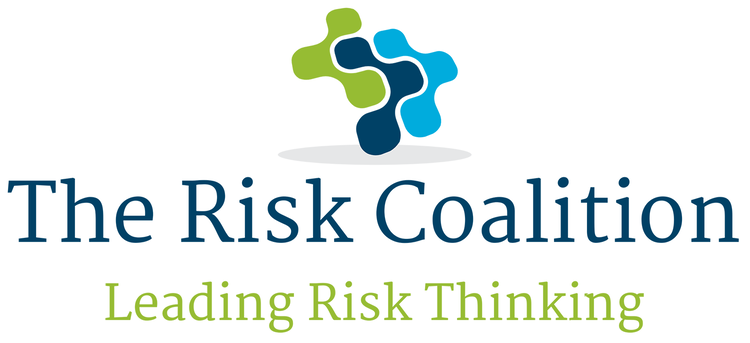We established the Risk Officer Sustainability Forum (ROSF) to bring together risk and sustainability leaders from across small and medium-sized financial institutions and discuss how they are managing the challenges of rapidly developing sustainability risks.
Not surprisingly the first topic to be tackled was the target operating model itself. How does the risk function and the Chief Risk Officer interact with the sustainability agenda and what is their sphere of influence or control?
Inevitably for such a rapidly evolving area, multiple models are in existence and a group of 15 leaders debated the pros and cons of these different approaches in a virtual roundtable. In line with the ROSF mission of sharing its findings, this blog presents the key takeaways from that meeting.
We asked attendees to complete a pre-meeting survey (Figure 1) and this helped frame the roundtable. Of the 20 companies that responded, close to a majority of companies (45%) operated with the CRO leading a second line oversight and challenge of either a centralised or decentralised sustainability program. Given the UK regulatory context, 25% of CRO reported that they also specifically owned the Senior Manager Regime accountability for climate risk management. Interestingly 20% of CRO reported that they specifically held the executive committee functional responsibility for sustainability alongside their other duties. Finally, with remarkable honesty, one respondent admitted that they had yet to put a governance model around sustainability.
Figure 1 - Sustainability operating models
Not surprisingly, the survey also indicated that most organisations positioned themselves in the middle of a 5-point Sustainability Management maturity model (based on a University of Manchester paper) (Figure 2). Progress has been made in the last 2 years, but the roundtable debate confirmed that there was still significant work to do.
Figure 2 - Sustainability maturity profiles
The roundtable explored four operational models (B through to E), with a different CRO leading each portion of the discussion.
Model B – Oversight of decentralised approach:
CRO leads second line oversight of dispersed approach
Benefits
This is probably the ‘end game’ for most organisations
Taking on the hard work of engagement and embedding early on
Can lead a disjointed program, some areas running ahead of the corporate agenda
Bottom-up buy in tends to be hard won but persistent
Challenges
Difficult journey with the potential to have to re-launch the program several times
Each area in danger of pushing a local agenda
Hard to coordinate approaches
Hard for the Second Line to oversee, given multiple touch points
Model C – Oversight of centralised approach:
CRO leads second line oversight of centralised approach
Benefits
Having a single point of focus for the whole sustainability agenda drives strategic clarity
Leader can help with education and engagement
Challenges
Centralised program may feel forced or lead to tick-box outcomes
Central team has to take on the coordination work
Easier to provide Second Line oversight to a coordinate program
Model D – Climate leadership:
CRO has executive accountability for climate risk management. Wider ESG agenda is managed separately
Benefits
Gives clear oversight of compliance with PRA Supervisory Statement 3/19
Centralised oversight of climate risk
Easier to integrate climate-related sustainability issues into the current risk management framework
Challenges
Potential for wider social and governance aspects being lost due to focus on climate agenda
Typically has led to a project-based approach to address immediate regulatory requirements, with longer term ownership and governance still to be embedded
Model E – Ownership:
CRO has an additional executive functional accountability for sustainability
Benefits
Clearly assigned and centralised ownership
Ability to bring a unifying vision
CRO brings a broad, risk-based perspective to the issue
Given the fast moving and uncertain position, CRO can provide a strong transitional role, pending further embedding
Challenges
Potential for a conflict interest between executive accountability and the Second Line role
The CRO needs to show courage and leadership in setting ambitions for the organisation in a very uncertain environment
Business may wrongly expect the CRO to have all the answers
Risk of being left ‘holding the baby’ if appropriate partnerships with other executives is not established
In exposing each model in turn, this created a lively and engaging debate. It became obvious that each organisation’s context in terms of business model, culture, values and maturity was dictating how these challenges were being addressed. Some participants openly acknowledged that they were operating with a certain model as a pragmatic solution to moving the topic forward, and that their end-state might be quite different. The group was fairly evenly split about the pros and cons of a centralised or decentralised approach. This tended to mirror how the organisation was generally managed and was not unique to the sustainability agenda.
In terms of CRO ownership of Sustainability, this was in part driven by small and medium organisations not having the luxury of being able to support a dedicated Chief Sustainability Officer, nor a large sustainability team at this time. It also offered professional development opportunities for CROs to transition into a more general management role over time, which has been recognised by CEOs and Boards.
In conclusion, participants found the debate very thought provoking and recognised that although there was no ‘magic bullet’ in terms of the perfect Operating Model. Knowing the strengths and weaknesses of your current approach was valuable, as was knowing where you were ultimately seeking to drive the strategy for sustainability. Being clear on board and stakeholder expectations and the ambition for the organisation enabled the Operating Model to be put into context.
ROSF intends to hold similar roundtables once per quarter and the next topic planned for September 2021 will be “Is sustainability regulation a neglected area of emerging risk?”. Please contact the Risk Coalition if you are interested in taking part.
Alex Hindson is Chief Risk & Sustainability Officer at Argo Group and a Co-Chair of the Risk Officer Sustainability Forum.



